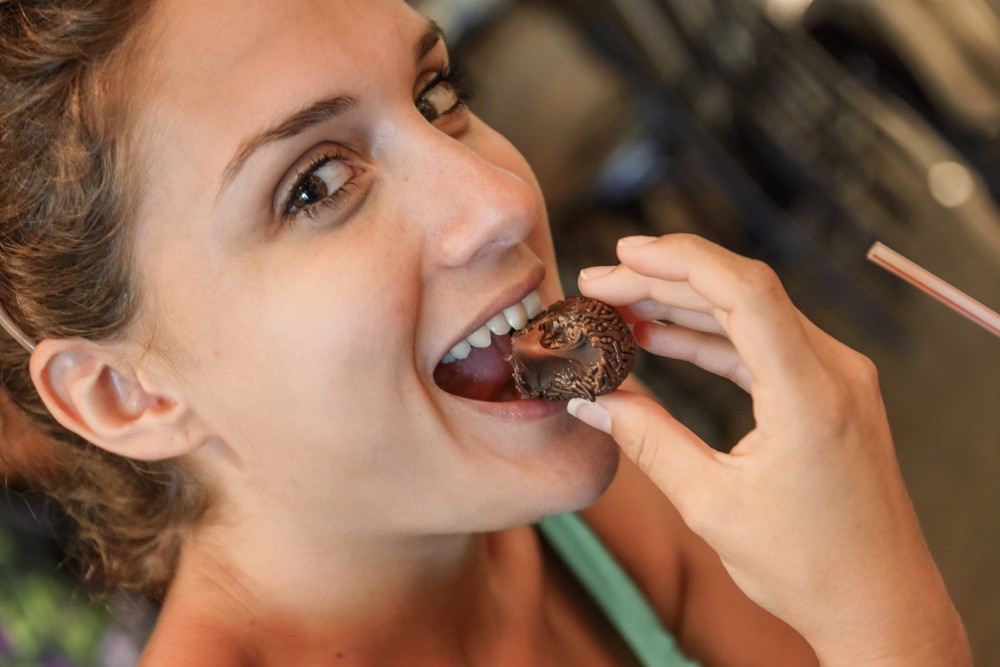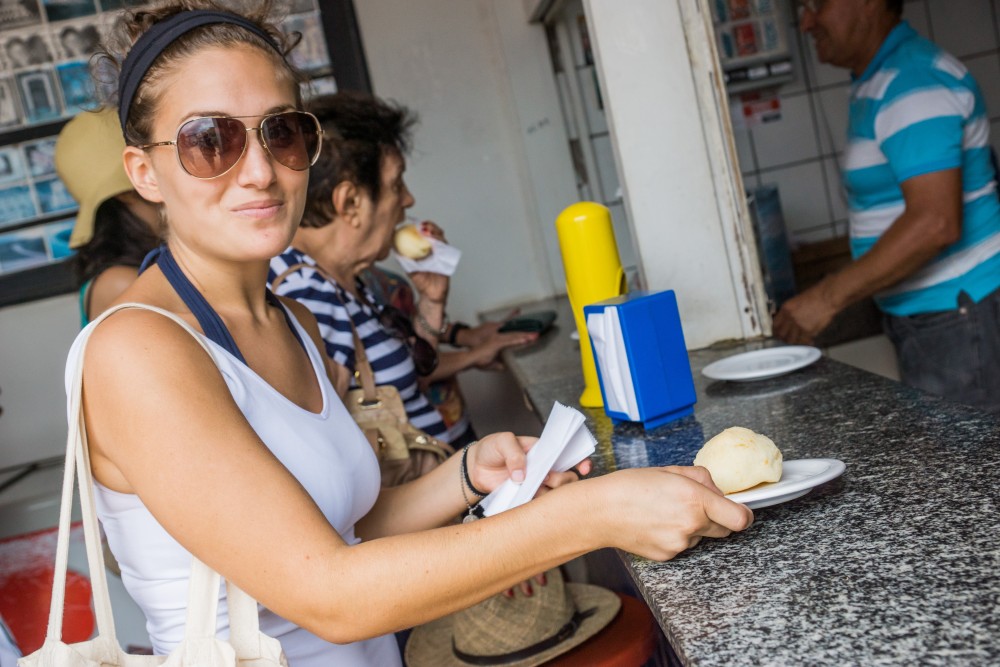Traveling Internationally with Food Allergies
Nikki enjoying a Brigadeiro in Brazil. © André Maceira / EMBRATUR
At the age of six, I was diagnosed with a severe nut and peanut allergy by an allergist out of Children’s Hospital of Pennsylvania. An education pursued on how to read nutritional information, dissecting restaurant menus and trying – still to no avail – to inform the people closest to me what it means to have an allergy that could kill me. Through the years, I’ve read everything from the New England Medical Journal to the memoir Don’t Kill the Birthday Girl by Sandra Beasley.
A bit of vital info. as I continue my plight in life to explain just how serious a food allergy is:
Everyone’s bodies react differently – hives, itchy mouth, swelling – so only the affected can really know when something isn’t right. It’s a sixth sense really, an impending doom that something is in your immediate environment. Like on safari when the gazelle go from grazing to ears erect and body ridged as a lion slinks through the overgrown grass? Yes, like that.
Then I fell in love with travel…and food…and exploring foreign cultures through their culinary specialties. Suddenly – along with an intense excitement and sense of intrigue along my journeys – I had to adapt my friends and family spiel to a less familiar audience. While every trail leads to different challenges, I’ve found these tips particularly helpful, and yes, I’v found traveling with food allergies doesn’t have to be stressful!
An estimated 69 million US citizens traveled abroad in 2014. An estimated 15 million people have been diagnosed with severe food allergies in the US. The most common, the “big 8” as they’re known, are nuts, peanuts, egg, milk, soy, wheat, fish and shellfish. If these figures accurate, this means more than one in every five travelers are dealing with life-threatening food allergies.
Translate key phrases
While many countries speak English, I’ve found places where the language barrier has made me uneasy and unsure to order. But one of the best parts of traveling is the food!
I learn how to communicate, “I am allergic” and “no nuts/peanuts” before I leave home. Plus, I always have a translation app on hand (which comes in handy beyond breakfast time). Google Translate is a solid option, and with Google’s purchase of Word Lens, it can visually translate for six languages.
Be aware of your environment
This means:
1. You could be traveling through peanut farms and the odor can trigger a reaction. When I was in Brazil, I realized the prevalence of cashews- the nut, the flower, the trees. Luckily I’m not a tree-hugger…at least not literally. But as I walked around, I came across plenty of them and cocktail menus everywhere embraced the caju caipirinha.
2. What is your destination known for? Memphis is the PB&J capital in honor of Elvis and his favorite sandwich. I should probably take extra caution when planning meals in Memphis and unfortunately miss out on something the destination is known for.
Triple check
Check when ordering, request the chef be told, confirm when your plate is served. I make the server aware of my allergy, explaining the severity. If I’m feeling humorous, I might throw in that I don’t feel like dying today. But really, it’s not funny. I could die.
Next, I like to follow up to make sure the server didn’t take it upon himself to a-ok my order. If a restaurant is really on top of its food prep, and often at finer dining restaurants, the chef will come out to review the menu with me. Sometimes I just ask to speak with the chef to ensure he’s aware of my allergy and what I ordered. And then – one more time – as my plate is being placed in front of me, I deliver a quick, “no nuts right?” with a smile. Because a smile never hurts.
I’ve eaten in restaurants in America where I feel uncomfortable relying on a server’s reassurance, and I’ve enjoyed meals 100% confident my dish was nut-free in a foreign country where very few of the staff understood English. It all depends on the environment, surveying the menu and deciding whether or not you can trust where and how the food is being prepared. And of course, you being prepared.
A successful order: pão de quejo. Another safe meal! © André Maceira / EMBRATUR
Never leave meds behind
I used to travel with one EpiPen but now I do so with two. I also always have chewable Benadryl with me at all times and travel with liquid Benadryl in my bag. I find the liquid works faster in emergency moments.
And it might sound morose but I like to research the nearest hospital to where I’ll be staying too so I have the address on hand and distance in the back of my mind. It’s one less question mark when in a new, foreign environment.
Journey on, embrace the new faces and places you have the privilege to visit. With the proper preparation, you won’t have to be distracted by surprise encounters with your infamous allergens. Your best practices for travel will become second nature just like your day-to-day routine has become.
Recommended reading: An informative and entertaining read about the day-to-day challenges of living with food allergies.



